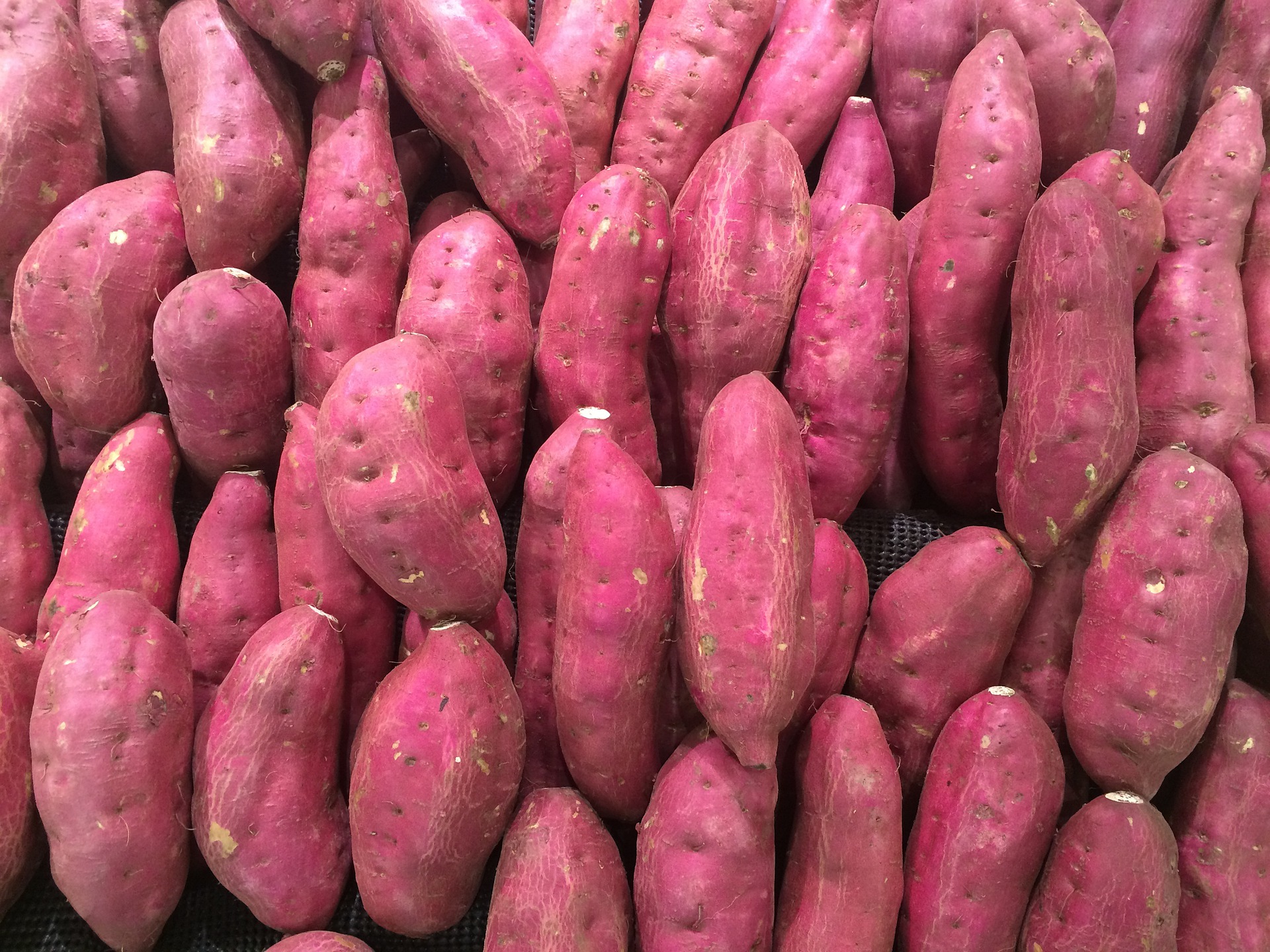The sweet potato is an actual trend food. Not only is it loved in faraway countries, but Europeans are also increasingly enjoying this all-around talent in their everyday cuisine. No wonder it is simply delicious, versatile, and healthy!
The sweet potato with the sweet note is one of the seven most important staple foods worldwide. What the potato is for us in this country, the sweet potato means to people in subtropical and tropical countries. The so-called batata (Ipomoea batatas), which incidentally has nothing to do with the conventional potato from a botanical point of view, has found its place on our supermarket shelves for some time now. It still has a long transport route, mainly from the USA and warm countries such as Spain, Israel, and Egypt. It is, therefore, not considered particularly sustainable. But this is set to change soon due to the high demand, as new varieties and the increasingly warmer weather mean that the brown-reddish root tuber can also be cultivated in Austria.
Not only do adults love sweet potato, but also the children like it very much. It tastes more like a carrot and a pumpkin and has a large fan community, mainly because of its versatility. Whether as crispy sticks, as a gratin, as a puree or soup, as a roast, or in sweet dishes such as desserts or cakes – the tuber is enormously versatile and delicious on many occasions. It differs from its namesake, the potato, not only in taste but also in its cooking time, which is reduced by a third. So when things need to be done quickly, the sweet potato offers the ideal change.
As a vegetable, sweet potato provides hardly any protein and fat. It is also precious from a nutritional point of view in terms of its vital substance content. Compared to our potato, it is slightly richer in calcium and magnesium and provides more vitamin E, C, and folic acid. Not to mention the considerable content of beta-carotene, to which, by the way, the tuber owes its color. It is richer in carbohydrates and thus provides more kilocalories than the conventional potato. Nevertheless, the glycemic index is lower depending on the variety and preparation. The lower this value, the less quickly the blood sugar level rises. Last but not least, the satiety effect is also higher. These two favorable
Many reasons, therefore, make sweet potato more and more popular, especially among health-conscious consumers!
This post has already been read 1030 times!



